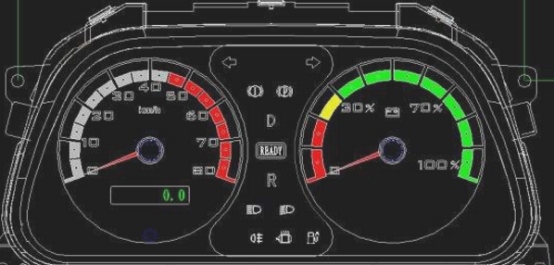What are the techniques for car electronic instrument maintenance?

(1) Automotive electronic instrument sensor maintenance.
Automotive electronic instrument display system failures typically occur on sensors, connectors, wires, individual meters, and displays.
The detection of a resistive sensor is usually determined by measuring the resistance, that is, comparing the measured resistance value with its specified standard resistance value. If the measured resistance value is less than the specified value, it indicates that the sensor is internally short-circuited; if the resistance value is too large or infinite, the internal contact of the sensor is poor or open, and the sensor should be replaced.
(2) Inspection of automotive electronic instrument connector.
Cars that use electronic meters often require a lot of connectors to connect the wire harness to the dashboard. These connectors are generally in different colors in order to identify which - part of the connection it belongs to. In order to ensure that the connection is reliable and firm, there is no locking device on the connector. The inspection can be carried out by eye or hand touch. The connector device should be complete and intact, and the plug and socket should be in contact with reliable and rust-free. When the instrument circuit is working, the connector should be touched by hand. There should be no obvious temperature feeling. If the temperature is too high, the connector is in poor contact, and the cause should be identified.
(3) Automotive electronic instrument panel inspection.
Cars for electronic dashboards are usually controlled by a microcomputer and have a self-test function. As long as the command is given, the electronic controller of the electronic instrument panel performs a system check on the main display device. If a fault occurs, the driver is warned in different ways, the display system is faulty, and the fault code of the faulty part is stored. In order to repair, the fault code is called out to indicate the fault location.
(4) Handling of some strokes and line segments on the display of automotive electronic instruments.
Once the strokes and line segments of the display on the electronic instrument panel are faulty, the display on the instrument panel should be adjusted to the static display state. If there are any other faults, the faults that occur at this time can be used with the detection equipment.The circuit or device is carefully checked. If only two strokes or line segments are not lit or not displayed, it means that the logic board's multiplexed pulse signal is correct. It may be that some line segments of the display device are not working properly. In this case, the inspection should be improved, which is poor contact. It should be tightened to ensure that its circuit is clear. If it is a problem with the electronics itself, the display device or display board should normally be replaced.
(5) Troubleshooting of automotive electronic instruments.
If it is found that only some of the instruments on the board have failed, the various parts related to the meter are inspected. First, check the connection of each wire, including the contact of each connector, whether the wire harness is damaged, grounding, short circuit and open circuit. If there is a testing device, the measuring device can be used to detect the meter and its sensor separately, to find out the cause of the fault, and to repair it, and to replace it with a new one.

